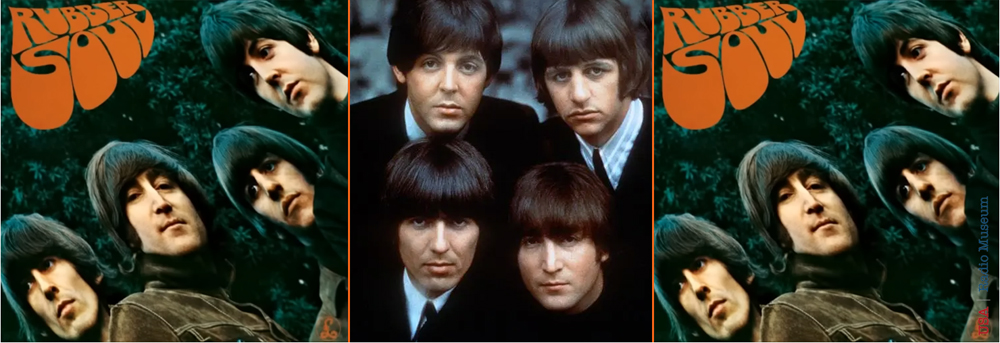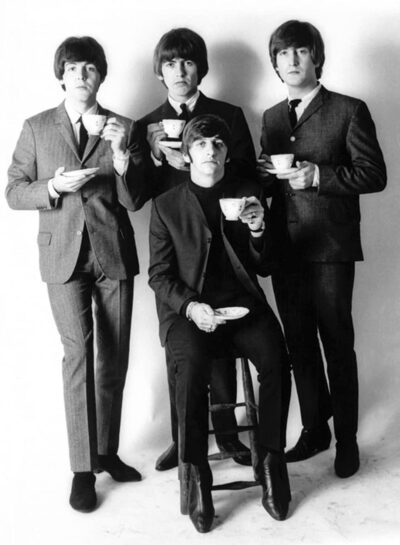Introduction: Rubber Soul and the Studio Awakening of The Beatles In the annals of 20th Century pop music history, few dates resonate with such qui
Introduction: Rubber Soul and the Studio Awakening of The Beatles
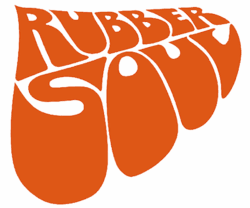 In the annals of 20th Century pop music history, few dates resonate with such quiet magnitude as November 11, 1965. On this day, inside the hallowed walls of EMI Studios—now Abbey Road—the Beatles completed Rubber Soul, an album that would mark a profound turning point in their artistic journey and in the evolution of the LP itself.
In the annals of 20th Century pop music history, few dates resonate with such quiet magnitude as November 11, 1965. On this day, inside the hallowed walls of EMI Studios—now Abbey Road—the Beatles completed Rubber Soul, an album that would mark a profound turning point in their artistic journey and in the evolution of the LP itself.
This was no ordinary recording session. It followed a summer of seismic experiences: a record-breaking concert at Shea Stadium, intimate encounters with Bob Dylan and Elvis Presley, and a month immersed in the pulse of American radio. The Beatles returned to London changed—not just by fame, but by influence, introspection, and a growing desire to craft music that spoke beyond the stage.
Guided by producer George Martin’s visionary hand and fueled by the soul of Motown, the folk-rock of the Byrds, and the lyrical depth of Dylan, the Beatles began to see the studio not as a tool, but as a canvas. Rubber Soul was the result: a cohesive, emotionally resonant LP that elevated the album format from commercial product to artistic statement.
At the USA Radio Museum, we honor this moment not only for its musical brilliance, but for its cultural significance. Rubber Soul was a leap—a shift from spectacle to substance, from pop to poetry. It was the sound of four young men growing up, and of a medium—radio—ready to carry that growth to millions.
This presentation invites you to step into that moment. When the tide turned. And to celebrate the soul the Beatles gave shape to, what would turn out to be, a monumental sixth album release, December 1965 . — USA RADIO MUSEUM
_____________________
Rubber Soul: The Turning of the Tide
On This Day in Pop Music History — November 11, 1965
The Beatles complete their most transformative LP at Abbey Road
In the autumn of 1965, as the leaves turned in London and the echoes of screaming fans faded into memory, The Beatles stepped into EMI Studios not as mop-topped idols, but as artists on the cusp of reinvention. Rubber Soul was born not from leisure, but from urgency—a deadline loomed, Christmas sales beckoned, and the band had just returned from a whirlwind North American tour that had left them exhilarated, exhausted, and changed.
They had played to over 55,000 fans at Shea Stadium, met Bob Dylan in New York, and finally shook hands with Elvis Presley in Los Angeles. These encounters weren’t just cultural milestones—they were catalytic. The Beatles came home with new ears, new ambitions, and a hunger to evolve. Rubber Soul would be the vessel.
Abbey Road: A Studio Becomes a Sanctuary
Recording began on October 12, 1965, and wrapped just over a month later on November 15. Thirteen days of sessions, totaling 113 hours, plus another 17 hours of mixing, yielded an album that would redefine pop music’s possibilities. The Beatles were no longer content to churn out hits—they wanted to craft a sonic statement.
George Martin, their longtime producer and now co-founder of Associated Independent Recording (AIR), was the guiding hand behind this metamorphosis. He brought not only technical mastery but a classical arranger’s ear and a willingness to experiment. Martin later called Rubber Soul “the first album to present a new, growing Beatles to the world,” and rightly so.
Norman Smith, the recording engineer who had been with the band since their earliest EMI days, worked his final Beatles sessions here before being promoted to producer. His fingerprints are on every track, capturing the band’s shift from live performance to studio artistry.
Songs Born of Travel, Soul, and Struggle
 Most of the songs were composed in the weeks following their August tour of America. The influence of U.S. radio was palpable—Motown, Stax, and the folk-rock of Dylan and the Byrds seeped into their melodies and lyrics. The Beatles weren’t just absorbing—they were exchanging. As author Robert Rodriguez noted, the Byrds had taken something from the Brits, added to it, and sent it back. The result was a transatlantic feedback loop of innovation.
Most of the songs were composed in the weeks following their August tour of America. The influence of U.S. radio was palpable—Motown, Stax, and the folk-rock of Dylan and the Byrds seeped into their melodies and lyrics. The Beatles weren’t just absorbing—they were exchanging. As author Robert Rodriguez noted, the Byrds had taken something from the Brits, added to it, and sent it back. The result was a transatlantic feedback loop of innovation.
Tim Riley described Rubber Soul as a “step toward a greater synthesis” of the musical explosion of 1965. Dylan and the Rolling Stones weren’t just influences—they were peers, sparring partners in a creative renaissance.
The Beatles themselves were evolving. Lennon recalled that Rubber Soul was the first time they took control in the studio, making demands and shaping the sound rather than accepting standard practices. McCartney and Harrison echoed this sentiment, noting how they began hearing sounds they hadn’t heard before—textures, tones, and arrangements that defied the stage.
A Race Against Time
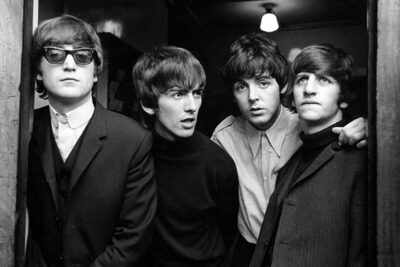 Despite their artistic ambitions, the band faced a tight deadline. EMI’s schedule, set in 1963 by Brian Epstein and George Martin, required a new album in time for Christmas. They had just released Help! in August, and now had to deliver again.
Despite their artistic ambitions, the band faced a tight deadline. EMI’s schedule, set in 1963 by Brian Epstein and George Martin, required a new album in time for Christmas. They had just released Help! in August, and now had to deliver again.
Sessions ran late into the night, often ending at 3 a.m. On October 27, a session was canceled due to lack of material. Martin told reporters they hoped to resume next week but wouldn’t consider outside compositions. The Beatles were determined to fill the album with originals.
They pulled “Wait” from the Help! sessions, recorded the bluesy “12-Bar Original” (unreleased until 1996), and crafted “Day Tripper” and “We Can Work It Out” as a double A-side single to accompany the album. To avoid promotional fatigue, they filmed clips for the songs—an early precursor to the music video era.
The Final Session: November 11, 1965
On this day, the Beatles returned to Abbey Road to complete the album. They needed three songs. “Wait” was dusted off and polished. Then came two new gems: Paul’s “You Won’t See Me,” a melancholic meditation on emotional distance, and John’s “Girl,” a haunting blend of romantic idealism and existential ache. Both were recorded in just two takes.
It was a moment of clarity, urgency, and mastery. The album was complete. By December 3, it was in UK shops; by December 6, in the US.
Interruptions and Honors
Amid the recording frenzy, the Beatles paused for two major events. On October 26, they received their MBEs from Queen Elizabeth II at Buckingham Palace. And on November 1–2, they filmed segments for The Music of Lennon & McCartney, a Granada Television tribute to their songwriting partnership.
These moments underscored their dual identity: cultural icons and restless creators. Rubber Soul was the bridge between those worlds.
Radio’s Role in the Soul of Rubber Soul
Though the album was conceived in the studio, its spirit was amplified on the airwaves. American radio stations embraced its introspective tone and sonic sophistication. DJs spun “Norwegian Wood,” “Michelle,” and “In My Life” not just as hits, but as statements. The album’s soul-infused textures and folk-rock leanings resonated with listeners who had grown up on AM pop but were now craving depth.
Stations like WABC in New York and KHJ in Los Angeles helped shape the album’s reception, contextualizing its shift from Beatlemania to artistry. WKNR in Detroit premiered the album exclusively in December 1965 on the Bob Green Show. The Beatles weren’t just chart-toppers—they were mood-setters, storytellers, and sonic architects.
A New Kind of Album
Rubber Soul was the second Beatles LP to feature only original material, following A Hard Day’s Night. It marked a departure from the singles-driven model of pop music. Albums were now entities—artworks with cohesion, intention, and emotional arc.
Philip Norman noted that the Beatles were increasingly drawn to EMI’s cache of exotic instruments and studio resources. With Martin’s orchestral sensibilities and the band’s curiosity, they created music that was never meant to be played live. It was meant to be experienced—on vinyl, in headphones, through the radio, in solitude.
🇬🇧 Rubber Soul — UK EMI Version (14 Tracks)
The original UK release included all 14 newly recorded songs:
1. Drive My Car
2. Norwegian Wood (This Bird Has Flown)
3. You Won’t See Me
4. Nowhere Man
5. Think for Yourself
6. The Word
7. Michelle
8. What Goes On
9. Girl
10. I’m Looking Through You
11. In My Life
12. Wait
13. If I Needed Someone
14. Run for Your Life
Why the Difference?
Capitol’s practice of altering Beatles albums for the U.S. market was common in the early years. Their goal was to tailor releases to American tastes and maximize commercial appeal. While the UK version reflected the Beatles’ artistic intent, the U.S. version shaped how American audiences experienced Rubber Soul—and arguably helped fuel its folk-rock reputation.
🇺🇸 Rubber Soul — U.S. Capitol Records Version (12 Tracks)
Capitol reconfigured the album to emphasize a “folk rock” feel for the American market. They added two songs from the UK Help! LP:
• “I’ve Just Seen a Face”
• “It’s Only Love”
• Omitted four songs from the UK Rubber Soul:
• “Drive My Car”
• “Nowhere Man”
• “What Goes On”
• “If I Needed Someone”
This reshuffling gave the U.S. version a more acoustic and introspective tone, aligning with the folk-pop trend popular on American radio at the time.
Legacy and Influence
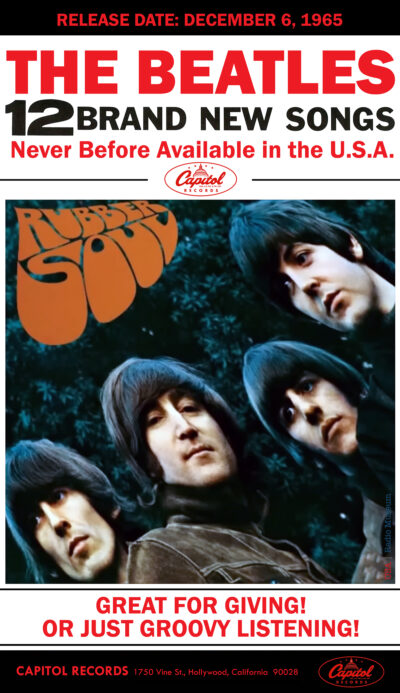 The album’s impact was immediate and enduring. It inspired peers to think beyond singles. It opened doors to psychedelia, progressive rock, and the album-as-art concept. Rolling Stone ranked it fifth on its 2012 list of the “500 Greatest Albums of All Time.” Colin Larkin placed it at number 34 in his All Time Top 1000 Albums. It was certified 6× platinum in the US and platinum in the UK.
The album’s impact was immediate and enduring. It inspired peers to think beyond singles. It opened doors to psychedelia, progressive rock, and the album-as-art concept. Rolling Stone ranked it fifth on its 2012 list of the “500 Greatest Albums of All Time.” Colin Larkin placed it at number 34 in his All Time Top 1000 Albums. It was certified 6× platinum in the US and platinum in the UK.
George Harrison later called it his favorite Beatles album. Barry Miles, chronicler of the UK underground, said Rubber Soul and Revolver were when the Beatles became a creative entity unto themselves.
Reflection: The Soul in Rubber Soul
Rubber Soul wasn’t just a title—it was a declaration. The Beatles had found their soul, not in spectacle, but in introspection. They had traded stadiums for studios, screams for silence, and mop tops for meaning. On November 11, 1965, they didn’t just finish an album—they turned a page. And thanks to radio, that page was read (and heard) aloud to millions.
Closing Reflection
As the final notes of Rubber Soul faded into the mix on November 11, 1965, something deeper had been recorded—an awakening. The Beatles had crossed a threshold, not just in sound, but in spirit. They had turned the LP into a canvas, the studio into a sanctuary, and pop music into something that could think, feel, and last.
At the USA Radio Museum, we honor this moment not only for its brilliance, but for its bravery. It reminds us that behind every broadcast, every vinyl groove, and every echo on the dial, there is a story of transformation. Rubber Soul was one such story—pressed in wax, etched in tape, and carried forever by radio waves, yesterday, today, and tomorrow.
Sources:
Rubber Soul – Wikipedia
The Beatles’ Rubber Soul: 60 Years On
Rubber Soul: The in-depth story
Rubber Soul: A Deep Dive
Rubber Soul: 60 Years On – Cave Hollywood
_________________________
Contact: jimf.usaradiomuseum@gmail.com
_________________________
A USARM Viewing Tip: On your PC? Mouse/click over each image for expanded views. On your mobile or tablet device? Finger-tap all the above images inside the post and stretch image across your device’s screen for LARGEST digitized view. Then click your brower’s back arrow to return to the featured post.
© 2025 USA Radio Museum. All rights reserved.

